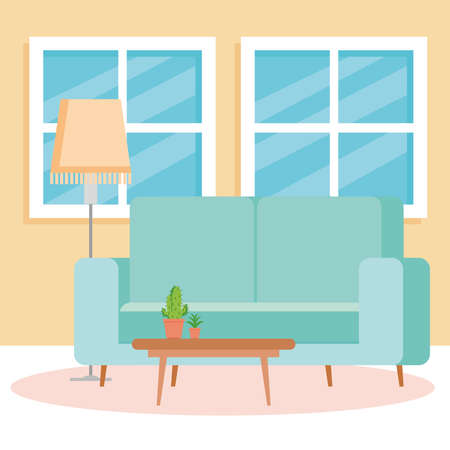Understanding Minimalist and Cozy Design
When it comes to designing a home office, the choice between minimalist and cozy styles is more than just picking furniture or colors. Each approach brings a unique philosophy that shapes how your workspace looks and feels. Minimalism is all about simplicity, clean lines, and a clutter-free environment. It creates a sense of calm by focusing on the essentials—think neutral tones, open space, and functional pieces that serve a purpose without overwhelming the room. On the flip side, cozy design leans into warmth and comfort. This style embraces layered textures, soft lighting, and personal touches that make the space feel inviting and lived-in. Understanding the core principles of minimalism and coziness will help you decide which vibe best supports your workflow and creativity in your home office.
2. Pros and Cons in an American Work-From-Home Culture
As remote work becomes a mainstay in the United States, choosing between minimalist and cozy home office designs goes beyond aesthetics—it shapes how we work, create, and feel every day. Let’s break down how each style aligns with productivity, comfort, and creativity for the modern American remote worker.
| Minimalist | Cozy | |
|---|---|---|
| Productivity | Clutter-free spaces reduce distractions; encourages focus and efficiency. Common among tech professionals seeking streamlined workflows. | Comfort-driven setups can boost morale but risk inviting distractions. Popular with creatives who blend work with relaxation. |
| Comfort | Sleek furniture may prioritize form over function; less physical comfort if ergonomics are overlooked. | Soft textures, layered lighting, and personal touches support longer hours and well-being during extended Zoom calls. |
| Creativity | Neutral palettes and clean lines can spark clear thinking but may feel uninspiring for some roles. | Personalized décor and warmth foster inspiration—ideal for writers, designers, and anyone valuing emotional connection to their workspace. |
American Work-from-Home Priorities
Flexibility Matters Most
In the U.S., home offices often double as guest rooms or creative studios. Minimalism supports seamless transitions between functions, while coziness adapts to family life—think kids joining virtual school or pets lounging nearby.
The Bottom Line
Minimalist design promotes a sense of order that many American professionals crave for staying on task. Cozy environments nurture mental health, which is increasingly prioritized in today’s culture. Ultimately, finding your perfect balance depends on which values—focus or comfort—drive your best work from home experience.

3. Styling Your Space: Key Elements for Each Approach
Signature Colors
Minimalist Office Palette
Minimalism celebrates clean, neutral colors—think crisp whites, soft grays, and subtle beiges. These hues amplify natural light and create an uncluttered canvas that feels calm and focused. For a touch of contrast, add black or charcoal accents through lighting fixtures or desk accessories.
Cozy Office Palette
The cozy approach leans into warm, inviting tones. Earthy shades like terracotta, olive green, deep navy, or muted golds set a comforting mood. Layering these colors with creamy neutrals on walls or textiles brings depth and a sense of homeyness to your workspace.
Furniture Choices
Minimalist Essentials
A minimalist office is all about sleek functionality. Choose streamlined desks with simple silhouettes—think white lacquer or light wood. Opt for ergonomic chairs in understated fabrics or leather. Storage should be hidden or seamlessly integrated to preserve a tidy atmosphere.
Cozy Comforts
For cozy offices, comfort is king. Select plush chairs with soft upholstery and supportive cushions. Wooden desks with rounded edges and visible grain offer warmth and character. Open shelving filled with books, plants, or personal items makes the space feel lived-in without being chaotic.
Decor Details
Minimalist Accents
Less is more when it comes to minimalist decor. Limit yourself to one or two curated pieces—maybe a geometric vase, a single framed print, or a sleek desk lamp. Keep surfaces clear to foster mental clarity and boost productivity.
Cozy Touches
The cozy look thrives on layers and texture. Throw blankets over your chair, pile up accent pillows, and use area rugs to define the workspace. Add personal touches like family photos, candles, or a favorite mug to evoke warmth and individuality without overwhelming the space.
4. Mixing Both Worlds: Creating a Balanced Home Office
Striking a balance between minimalist clarity and cozy warmth can elevate your home office into a sanctuary of both productivity and comfort. Instead of picking sides, why not blend the best elements from each approach? Here are some practical tips to help you merge minimalism and coziness, ensuring your workspace feels inviting yet uncluttered.
Tips for Blending Minimalism and Coziness
| Minimalist Element | Cozy Touch | How to Combine |
|---|---|---|
| Neutral Color Palette | Soft Textures (throws, rugs) | Use whites, beiges, or muted tones as your base and layer in tactile materials for comfort. |
| Simple Furniture Lines | Pillows & Cushions | Select streamlined desks and chairs, then add plush seat cushions or lumbar pillows for extra coziness. |
| Clutter-Free Surfaces | Personal Decor (art, plants) | Keep desktops tidy but incorporate meaningful items like small plants or framed prints to add warmth. |
| Functional Lighting | Ambient Glow (lamps, candles) | Pair sleek task lighting with a soft-glow lamp or candle to create an inviting atmosphere. |
Edit With Intention
The secret to success is intentional editing. Before adding any new piece—be it a storage box or a knit blanket—ask if it serves both function and feeling. This mindful curation keeps your space both purposeful and approachable.
Find Your Personal Balance
Your ideal mix may be unique. Experiment with layering textures while maintaining clean lines, or alternate between open shelves and closed storage. The goal is a workspace that sparks creativity without overwhelming the senses—a place where focus meets comfort every day.
5. Personalization Tips for a Space That Fits You
Whether you lean minimalist or cozy, your home office should be a true reflection of who you are and how you work best. Start by assessing your daily workflow—do you thrive in a clutter-free zone, or does a touch of warmth help spark creativity? For minimalists, choose purposeful pieces: a streamlined desk, ergonomic chair, and subtle decor that leaves room to breathe. Stick to a neutral palette, but don’t be afraid to layer in a pop of color through a bold lamp or modern art print that speaks to your personality.
If cozy is more your vibe, focus on comfort-driven details. Add plush textures with an area rug or throw blanket. Use soft lighting, like a desk lamp with adjustable brightness or fairy lights for a warm glow. Don’t forget personal touches: framed photos, favorite books, or a quirky mug collection can make your space inviting without overwhelming it.
No matter your style, balance aesthetics and function. Invest in smart storage—think floating shelves for minimalists or woven baskets for cozy fans—to keep essentials within reach but out of sight. Consider your senses too: scented candles or a playlist of calming sounds can elevate focus and mood. Remember, the goal isn’t to follow trends blindly but to curate a workspace that energizes and supports you every single day.
6. Final Thoughts: Choosing What Works for Your Lifestyle
Ultimately, designing your home office is a personal journey. Whether you gravitate toward the clean lines of minimalism or crave the warmth and comfort of a cozy space, the most important factor is how the environment supports your daily routines and mindset. Reflect on your unique work habits—do you thrive in clutter-free simplicity, or do layered textures help you feel at ease and inspired? Don’t be afraid to blend elements from both styles. Maybe a minimalist desk paired with a plush accent chair gives you focus and comfort in equal measure. The key is to experiment, observe how different setups affect your productivity and well-being, and adjust as your needs evolve. Your perfect home office isn’t about following trends; it’s about creating a space that truly fits your lifestyle.


